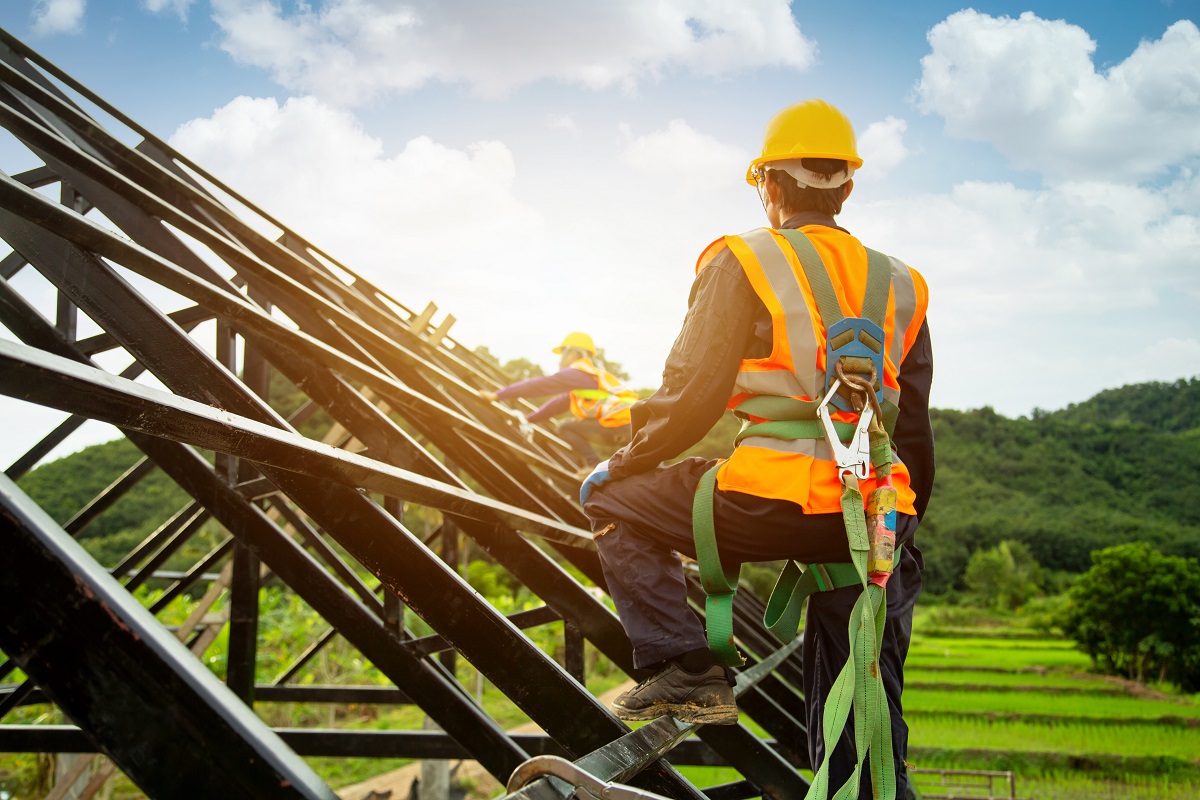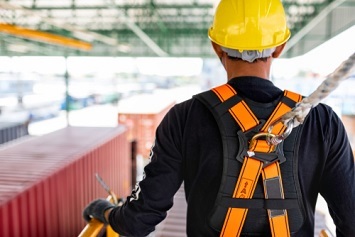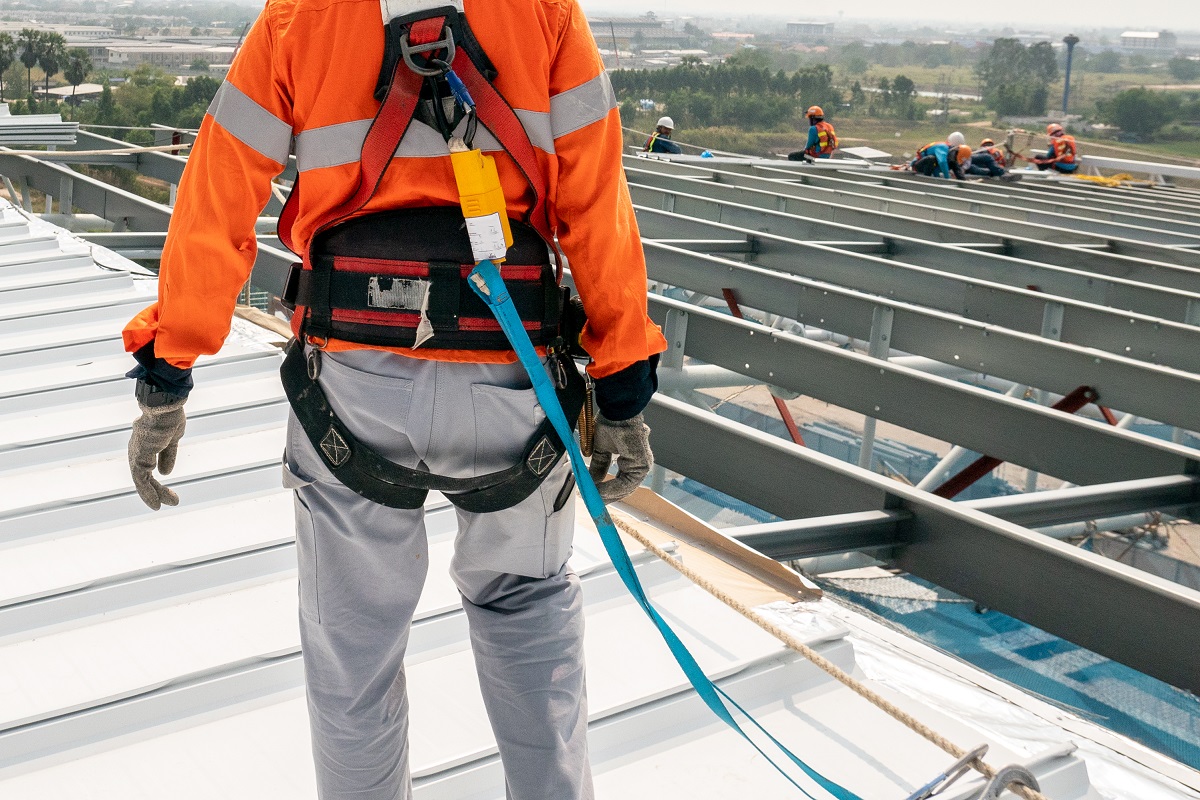Is your fall protection compliance ready for summer and the post-pandemic return to normalcy?
Fall hazards also are one of the Occupational Safety and Health Administration’s (OSHA) “Focus Four” hazards, along with struck-by, caught-in, and electrocution hazards that account for the majority of construction industry fatalities. Four of the agency’s top 10 most frequently cited standards—fall protection, scaffolds, ladders, and fall protection training—involve fall hazards.
The agency also incentivizes its area offices and their compliance safety and health officers to look for fall hazards. Beginning with the previous fiscal year (FY 2020), OSHA began prioritizing inspections for Focus Four hazards under its new OSHA Weighting System (OWS).
The agency deemphasized inspections for ergonomics and workplace violence hazards and began awarding three “enforcement units” (EUs) for Focus Four inspections.
Following an uptick in fatal falls a few years ago, OSHA’s Region II office (New Jersey, New York, Puerto Rico, and the U.S. Virgin Islands) initiated a Regional Emphasis Program (REP) for falls in construction that lasts until September 30, 2023. The agency’s Marlton, New Jersey, area office just announced the citation of six contractors at a luxury homebuilding site for fall protection and other violations, with proposed penalties of nearly $250,000.
The agency proposes penalties for fall protection violations that can be substantial, often in the six figures and occasionally in the millions, and not all citations have been at construction worksites.
Examples over the past few years include:
- The agency cited a Georgia tire manufacturer for repeat and serious violations, including fall hazards, and sought $507,299 in penalties and placed the employer in its Severe Violator Enforcement Program (SVEP), with mandatory follow-up inspections and increased agency pressure to abate cited hazards.
- OSHA recently cited a Waterville, Maine, auto body manufacturer for a willful, serious violation of the fall protection standard and other violations, seeking $393,992 in fines. Inspectors found employees on the production floor working on top of truck bodies without protection from falling to a concrete floor below.
- The agency cited a Missouri construction contractor for exposing employees to fall hazards at three separate jobsites, seeking $205,098 in proposed penalties, and an Ohio contractor for violations of fall protection standards at two separate jobsites, with a total of $200,451 in proposed penalties.
- Under its egregious citation policy, the agency cited a Jacksonville, Florida, roofing contractor with eight willful violations of the fall protection standard, seeking $1,007,717 in penalties, and the contractor was found in contempt of court and faced imprisonment for failing to pay $2,202,049 in penalties for earlier violations.
The agency placed the contractor into the SVEP due to the high-gravity willful, egregious violations related to fall hazards.
A Maine roofing contractor was twice cited by federal OSHA in 2019, first in June for 17 safety violations following a worker’s fatal fall, with proposed penalties of nearly $1.8 million, and again in December for willful, repeat, and serious violations at another jobsite, with the agency seeking a total of $278,456 in new penalties. The company’s owner also was charged under Maine’s workplace manslaughter law, a Class A felony that can result in a 30-year prison sentence and $50,000 fine. The owner’s 2020 criminal trial was delayed due to the COVID-19 pandemic.
During FY 2020, OSHA’s top 10 most frequently cited standards included 5,424 violations of the fall protection—general requirements (29 CFR §1926.501); 2,538 violations of the scaffolding (§1926.451); 2,129 violations of the ladders (§1926.1053); and 1,621 violations of the fall protection—training (§1926.503) standards.
Check Your Compliance
If you’re a construction employer, you need to check your compliance with OSHA’s fall protection standard (29 CFR 1926.501); the agency cites it more than any other worker safety and health rule. Under the rule, you must protect employees working at 6 feet or more above a lower level through the use of guardrail, safety net, or personal fall arrest systems.
If you are using a personal fall arrest system, you need to check its three components: an anchor that the other parts are rigged to, a full-body harness worn by a worker, and a lanyard or lifeline connecting the worker’s harness to the anchorage point.
Anchors used in fall arrest systems may be temporary, but there are advantages to using permanent anchors left in place. They can be used by roofers on later projects. A permanent anchor also can be used later by workers installing skylights or solar panels. Anchors may need to be used by more than one worker, so they must be able to hold at least 5,000 pounds per person. Alternatively, a qualified person would have to determine that the anchor can support at least twice its impact load (a “safety factor” of 2).
Options for anchors include a peak anchor—a solid, nonmoving piece secured at the rooftop to trusses underneath—or a permanent D-ring attached to a truss frame.
Safety net systems should be installed underneath trusses to prevent workers from falling to a lower level. However, safety nets must be able to prevent contact with a surface or structure below.
In addition to providing fall protection—using guardrail, personal fall arrest, or safety net systems—you also need to train employees on fall hazards and the use of fall protection. The fall protection training standard (§1926.503) is another of the 10 most frequently cited OSHA standards.
Every employee who might be exposed to fall hazards must have training that covers the nature of fall hazards on the job and content of the fall protection standards. You must provide employees instruction in how to correctly erect, inspect, maintain, and disassemble the guardrail, personal fall arrest, and safety net system chosen for a work site, as well as how to correctly use fall protection systems.
Workers also need to be retrained whenever there are changes in the equipment or systems used. Finally, you need to have written records certifying each worker’s fall protection training. Records need to include the employees’ names, date of training, and a trainer’s signature.
If you’re a nonconstruction employer, you still need to provide fall protection for work from heights—either a guardrail, personal fall arrest, or safety net system. The general industry requirements for fall protection are closely aligned with the construction industry standards. They also have requirements for the following:
- Positioning systems—equipment and connectors used with a body harness to support a worker on an elevated vertical surface, such as a wall or window sill;
- Travel restraint systems combining an anchorage, an anchorage connector, a lanyard or other means of connection, and body support to eliminate the possibility of a worker going over the unprotected edge or side of a walking-working surface; and
- Ladder safety system attached to a fixed ladder, usually consisting of a carrier, a safety sleeve, a lanyard, connectors, and a body harness, designed to eliminate or reduce the possibility of a worker falling off the ladder; cages and wells are not considered ladder safety systems.
Falls also are a potential hazard for recovery and cleanup workers responding in the aftermath of a hurricane. Other hazards include biological and chemical hazards of contaminated floodwaters, damaged power lines, debris and downed trees, and carbon monoxide fumes from gasoline-powered generators. The Eastern Pacific hurricane season runs from May 15 to November 30, and the Atlantic hurricane season begins June 1 and ends November 30. Workers must have fall protection and training before performing tasks at heights.
Emphasis Beyond Enforcement
In addition to robust enforcement efforts, OSHA also strives to address fall hazards through outreach efforts. The agency recently concluded its eighth annual weeklong National Stand-Down to Prevent Falls in Construction (May 3–7) that it sponsors along with the National Institute for Occupational Safety and Health (NIOSH) and The Center for Construction Research and Training (CPWR), a labor union-affiliated safety research center.
OSHA’s own resources include fact sheets and posters, along with links to outside resources like the CPWR’s stopconstructionfalls.com website, which has a map of past construction fatalities. NIOSH offers a free, downloadable Aerial Lift Hazard Recognition Simulator and a ladder safety mobile application available for the iPhone® or Android smartphone.
The American Society of Safety Professionals (ASSP) offers a variety of resources, including a fall protection toolbox and a free digital copy of its Fall Protection Code (ANSI/ASSP Z359.1-2020).
Two years ago, the ASSP and NIOSH renewed a workplace safety promotion and research partnership that included cooperation on research into fall protection measures for young, immigrant construction workers. The agencies found that young immigrant construction workers have overlapping vulnerabilities that include an unfamiliarity with the risks and safety practices in the American workplace; an adolescent’s risk-taking; and a lack of knowledge, skills, and job training.
The partnership promotes safety interventions like helping vulnerable workers gain basic safety and health skills, such as the ability to identify hazards and understand how they can be controlled.
Resources provided by the National Safety Council (NSC) include the group’s Ladder Safety topic page and fall prevention articles from the NSC’s Safety+Health magazine. The NSC also has conducted research into technological solutions to address fall hazards through its “Work to Zero” initiative. Last year, the NSC released a white paper, Safety Technology 2020: Mapping Technology Solutions for Reducing Serious Injuries and Fatalities in the Workplace, that looked at the hazardous workplace situations that most often lead to fatalities; contributing risk factors; and the environment, health, and safety (EHS) technologies that professionals see as potentially effective.
Work to Zero researchers found that the most promising technology solutions for work at heights included:
- Mobile anchor points that can allow workers to attach fall arrest systems to a roof with weighted anchors that do not require penetration of the structure;
- Aerial lifts and platforms that can give workers more stability and flexibility in their movement without having to traverse a structure;
- Self-retracting lines that can be connected to anchors and automatically stop a fall to reduce injuries caused by dangerous amounts of slack in a lifeline during abrupt falls; and
- The use of drones to perform tasks at heights like inspections of materials and structures.
With summer coming and a potential uptick in post-pandemic work, you need to renew your focus on hazards like worker falls.



